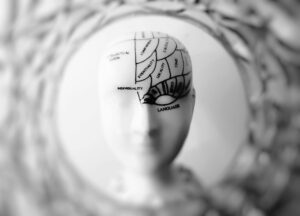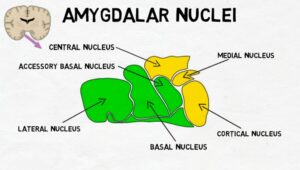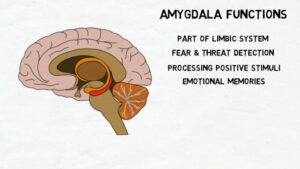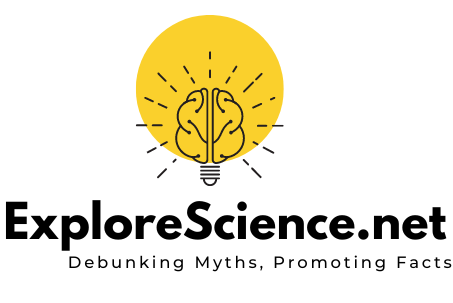Introduction:Let us understand How human brain controls emotions and feelings.Emotions were crucial to human survival during evolution and to the smooth operation of human civilizations’ their minds Emotions evolved and were favourably selected in evolution, in contrast to reflexes, which are involuntary, uncontrollable, narrowly-tuned responses to specific stimuli.

This is because emotions better addressed the issue of adaptability to a continuously changing environment. Adaptive skills such as finding food, water, and shelter, finding mates, providing sufficient care, nurturing, and protection for progeny, and, most critically, avoiding danger and escaping from life-threatening conditions were likely essential . The evolutionary origin of central emotional states has been proposed as the first cause of emotions, occurring when reflexes were diverged to include a layer of nerve cells on top of them.
The premise that emotions are determined by biology is the basis of the majority of modern theories of emotion . The discovery that some fundamental, main emotions—such as anger, fear, joy, sadness, love, affection and surprise—are intrinsic, manifest throughout the first nine months of life, and correspond with particular facial expressions is in line with this biological perspective.
As a result, they are equally acknowledged in many global civilizations .Different cultural contexts interpret and reproduce fundamental emotion facial expressions in similar ways, according to Ekmaan .While people from different cultures are generally similarly good at identifying basic, primary emotion facial expressions , assessing the degree of these expressions’ intensity varies depending on the cultural setting . An example of the emotions.
The amygdala is the primary subcortical emotional brain structure that plays a central role in contemporary theories of emotion. It continuously assesses and integrates a wide range of sensory information from the environment and assigns it appropriate values for emotional dimensions like valence, intensity, and approachability.
By altering short- and long-term synaptic plasticity, regulating autonomic and endocrine processes, facilitating decision-making and instinctive and motivational behavior adaptations to environmental changes through implicit associative learning, and triggering the fight-or-flight response through efferent projections from its central nucleus to cortical and subcortical structures, the amygdala plays a role in these processes.
The Emotional Anatomy:
Several nuclei and cortical areas situated bilaterally in the anteromedial region of the temporal lobes of the cerebrum (largest part of brain)combine to produce the amygdala. There are differing opinions regarding the definition of the term “amygdala,” including whether it refers to a single structure or a collection of extensions from other areas of the brain.
The processing and response to emotional stimuli are critical functions of the brain regions involved in emotion regulation, including the prefrontal cortex, hypothalamus, and amygdala.Processing of emotional reactions, such as those involving fear and pleasure, is mediated by the amygdala.The hypothalamus plays a role in controlling the release of hormones and heart rate, two physiological reactions linked to emotions.Higher-order cognitive processes like emotional control and decision-making are handled by the prefrontal cortex.
The amygdala in primates is typically composed of 13 cortical regions and nuclei.The consensus is that the amygdala can be classified into multiple groups based on the morphological and functional similarities among its nuclei. The para laminar nucleus, lateral, basal, and auxiliary basal are all part of the deep or basolateral group.
The cortical nucleus in contact with the relatively thin periamygdaloid paleocortex, the medial and central nuclei as two functionally similar nuclei, and the nucleus of the lateral olfactory tract which some authors do not include as a part of the amygdala are all included in the superficial, or corticomedial, group.
The greatest afferent fibers in the amygdala of all primates originate from the associative cortical areas of the ventral visual pathway, which process facial and object-related information. When this information reaches the lateral nucleus, it is assessed along with data from other sensory modalities to ascertain if it is a known stimulus or, based on prior experiences, a possible threat. The lateral nucleus receives topographically separated visual and auditory information, allowing for a quicker reaction to danger. This suggests that not all sensory cues are necessary to elicit a fear response . Similarly, the LA neurons may further integrate the temporal and spatial synaptic inputs from these sensory inputs, perhaps resulting in a delayed response
Hormones and Neurotransmitters:
In the brain, neurotransmitters are chemical messengers that carry messages from one neuron to another. Neurotransmitters such as dopamine, serotonin, and norepinephrine are important in regulating mood and emotions.Emotional reactions are also influenced by hormones such as oxytocin and cortisol. Stress causes the release of cortisol, whereas oxytocin promotes trust and social bonds.
The brain uses a sophisticated network of neuronal connections to respond to outside inputs. Different brain regions process and interpret emotional reactions that are triggered by sensory inputs and contextual stimuli.The capacity to control and adjust these reactions is known as emotional regulation, and it is essential for preserving psychological health.
What Effect Does Neuroplasticity Have?

The brain’s capacity to rearrange and adapt in response to experiences and environmental changes is known as neuroplasticity.Neuroplasticity is used by techniques like cognitive-behavioral therapy and mindfulness to encourage improvements in brain structure and emotional control.Through deliberate participation in neuroplasticity-promoting activities, people can improve their mental health and resilience.
How Nature and Nurture Interact:
The term “nature” alludes to innate biological characteristics and genetic predispositions that affect behavior and emotional experiences.Environmental factors that effect emotional development, such as upbringing, social interactions, and life events, are included in the concept of nurture.Creating successful interventions and treatment plans for mental health concerns requires an understanding of the interaction between nature and nurture.
The evolution of facial expressions and emotional responses was most likely first methodically studied by Darwin, who also recognized the significance of emotions for an organism’s ability to adapt to a variety of stimuli and environmental conditions .He concluded that emotions in humans and animals share a common evolutionary history in his 1872 book The expression of emotions in man and animals, which included a detailed description of individual facial expressions and the motor apparatus involved in expressing each individual emotion. Darwin predicted that study on facial expressions would not start for over a century by offering the evidence that some emotional expressions have universal meaning for people across the globe.
How Human brain controls emotions and feelings and development of amygdala in the foetal stage.
After fertilisation, the primordial amygdala emerges around 6 weeks later. The first cell clusters to be concurrently identified are the anterior amygdaloid area, corticomedial and basolateral groups .The hippocampus maintains a neuroanatomical link with the primordial cell clusters of the amygdala that lasts until the end of development. The olfactory bulb is reached by medial forebrain bundle fibres that emerge from the tegmentum close to the amygdala. It is unclear whether the amygdala is a developmentally homogenous structure or a diencephalic or telencephalic structure at the time of development. This goes back to Johnston’s 1924 initial account of the amygdala’s genesis.
at the time of his hypothesis that the amygdaloid complex was made up of “six or more clusters of cells, some of which represent primitive olfactory areas found in fish and others that are newly formed in terrestrial animals by the process of growth, cell migration, and folding of the adjacent piriform cortex.”
The cytoarchitecture of the amygdala bears similarities to both the cerebral cortex and the basal ganglia, indicating that it is not a homogeneous tissue. Jahnston’s division has been progressively acknowledged over time. Based on evolutionary and embryological studies, Jahnston separated the amygdala nuclei into two categories. He listed the lateral olfactory stria nucleus, as well as the central, medial, and cortical nuclei, as members of the “primitive” cell group.
However, he identified the cortical ingrowth and cell migration that create the basal and lateral nuclei as phylogenetically younger structures . Neurologist identified the basolateral complex (the basal and lateral nuclei) and the centromedial complex (the central and medial nuclei) in their ontogenetic investigation . The nucleus of the lateral olfactory stria in the amygdala at any stage of development, along with the anterior amygdaloid area, cortical nucleus, and intralaminar nuclei .
The anterior amygdaloid area and the corticomedial and basolateral complex comprise the amygdala nuclei, according to Crosby and Humphrey’s divisions. Therefore, it is not possible to agree on the amygdala subdivision based solely on histology and phylogenetic evidence.
The amygdala’s cell clusters are bigger at 7 postnatal weeks, however they still lack clear divisions, and the first fibre bundles emerge.Although the anterior region’s length is about identical to that of the remainder of the amygdaloid complex, as it develops, its relative size gets smaller. This region is nearly transversely traversed by the axons that connect the preoptic and hypothalamic areas with the amygdala. The ME grows comparatively. Primitive primary olfactory cerebral cortex forms in the primordial neostriatum, where the basolateral complex, still a single unit, continues. The cortical nucleus’s neuroblasts are dispersed throughout the basolateral complex’s surface rather than in large numbers.

The olfactory tubercle and the amygdala form reciprocal connections, and the stria thalamic bundle facilitates the formation of the initial connections between the two regions and the epithalamus.
The stria terminalis is already developed at the start of the seventh week of pregnancy, and connections with the cholinergic nuclei in the diencephalon, hippocampus, and diencephalic structures start to form . The amygdala’s basolateral group nuclei start to differentiate, with the lateral nucleus developing a little later and the basal nucleus being particularly distinct. It is possible to distinguish the medial forebrain bundle, globus pallidus. In the eighth week of pregnancy, the putamen abruptly appears and moves the amygdala towards the lateral. During this time, the amygdala’s central nucleus also undergoes differentiation .
Amygdala Emotions Start to Emerge on Their Own In daily life, and especially in social encounters, emotional control is crucial. According to research, the amygdala’s main function is to help people adapt to their surroundings. Negative emotions are linked to the amygdala’s increased activity, while positive emotions—like romantic love—are linked to the amygdala’s deactivation. The amygdala’s dysfunction is mostly linked to abnormal fear and aggression emotional control.
Hostile Behaviour
Aggressiveness, which comprises predatory aggressiveness (as in competition for food) and defensive aggression (as in defending the territory and progeny), is viewed from a biological standpoint as a survival skill. Pathological behaviour is applied to other hostile behaviours that do not fit these characteristics. One of the most challenging issues facing human society is aggressive behaviour, which includes everything from verbal threats to murder. Aggression is a phrase that refers to any actions that injure oneself or others. Within aggressiveness, violence is a more specific phrase that refers to the direct delivery of injury. Such actions may be planned out or impulsive.
Fear
The oldest and most powerful emotion, fear, was essential to the genesis of vertebrates .. Fear is necessary to face danger, even when hostility is necessary for capturing prey, guarding children, and defending territory. An organism’s ability to respond to danger and initiate a fight-or-flight response is thought to be largely dependent on the amygdala . Its major and most evolutionary significant role is in the detection of fear, even though it undoubtedly contributes to the evaluation of other emotions .Thus, in harmful settings, fear and the ensuing behaviours are either suppressed or generalised .The amygdala plays a critical role in emotional memory . processing emotionally charged cues from fear and the fight-or-flight reaction.
Conclusion
The emotional and feelings are controlled by the amygdala. Amygdala is the part of forebrain (prosencephalon) Neurologist beleive the all emotions like fear, anger ,love , affection and sexual behaviour is controlled by this part .some of the theories helped us to explain the role of human behaviour and its controlling centre.

